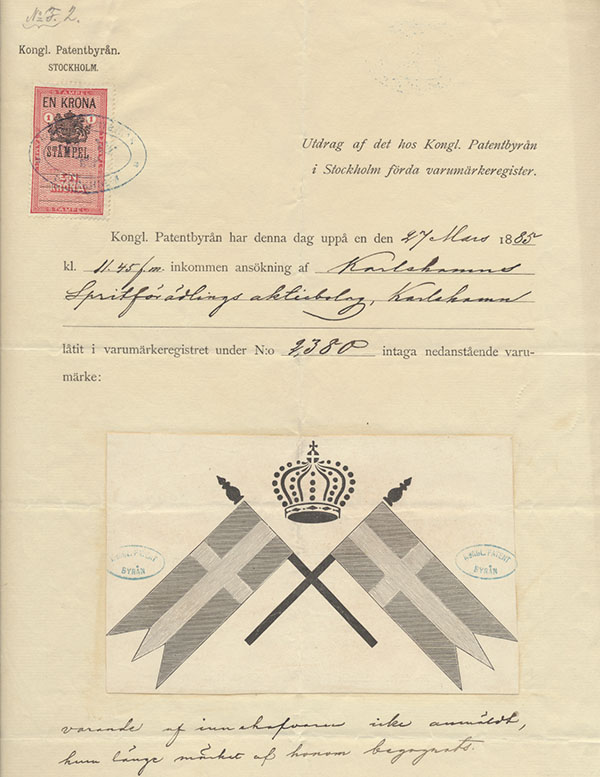
The classic Swedish drink “punsch”
In the early 1860s, L.O. Smith’s business was growing fast. Smith wanted to sell high quality products and set out on a mission to produce a pure vodka, free from harmful impurities. In his home town of Karlshamn, Sven Hellerström had found a way to purify liquor with the help of a German invention that used heat. Smith was familiar with the approach and decided to make it even better. Karlshamn was not only Smith’s hometown but also the location of his biggest liquor factories. The geographical location in southern Sweden was perfect: From the ice-free harbor, it was easy to reach the rest of Europe. This was great for importing the rectified spirit (base alcohol) from Russia and for exporting the finished product to Spain.
In 1876, Smith found out that Hellerström wanted to sell his German purification plant due to his deteriorating health. Smith paid about 200,000 SEK for the factory. A bonus included in the deal was that Hellerström had been manufacturing a special variety of Swedish punsch, based on the manufacturer CG Berg’s recipe. In the next few years, L.O. Smith would refine, produce and start marketing this hugely popular version of the noble beverage. In the middle of the century, two factories in Karlshamn produced punsch.
Compared to regular vodka, punsch has a sweet, rich flavor. It is also cheaper than cognac and rum. The sweet taste comes from arrack, extracted from palm trees on the island of Java and flavored with palm juice and sugar cane. The fermentation and distillation process consists of several steps, and the finished product can be served cold in the summer or hot in the winter.
In the 1850s, Swedes drank around six million liters of punsch per year. Naturally many people wanted to make the most of the demand, and variations with creative names like Cavalry and Wira appeared on the market. Punsch was so popular that there were several songs dedicated to it, including a song by the famous troubadour Bellman. Some families even named their veranda after the drink. A “punschveranda” was quite simply the best place to enjoy the sweet drink – either as a break in between courses during dinner or as an avec.

When a new trademark law was introduced in 1883, Smith registered his punsch as Carlshamns Flaggpunsch. Due to the fierce competition, he needed a careful marketing strategy. As a bit of a marketing genius, Smith would end up the clear winner of this sales battle too. Liquor featured heavily in advertising in those days, and everyone knew CG Berg, who had come up with the original recipe. Smith placed the name Berg on the label, along with two small Swedish war flags. It worked tremendously well and both Karlshamn and the rest of Sweden soon made Carlshamns Flaggpunsch their favorite drink. To this day, the 150-year-old brand is the most well-known punsch in Sweden.
The monumental success of the drink and the brand took a step back at the beginning of the 20th century. This is when the rationing booklet “motboken” was introduced and the production of alcohol was nationalized. The newly founded company Vin & Sprit kept four varieties of punsch: The big seller Carlshamns Flaggpunsch, of course, plus Cederlunds, Grönstedts, and a cheaper brand for restaurants.
Today, the punsch factory in Karlshamn is a museum and Carlshamns Flaggpunsch is manufactured in Finland. CG Berg’s name is still on the label.